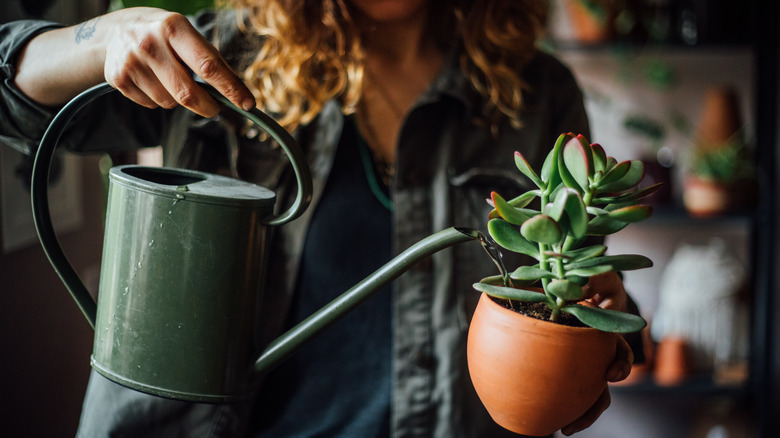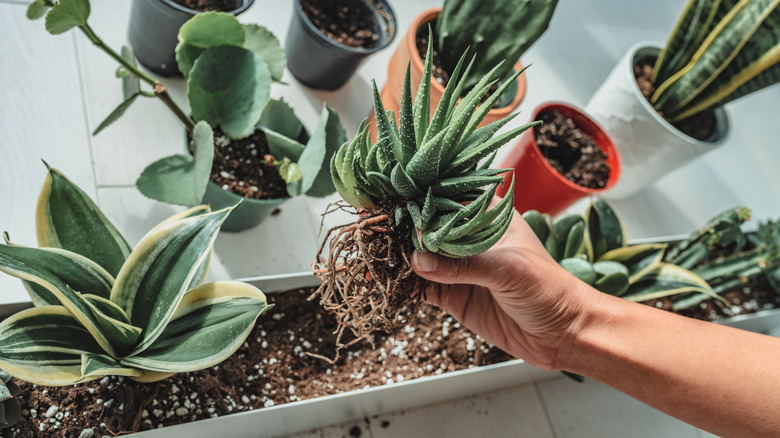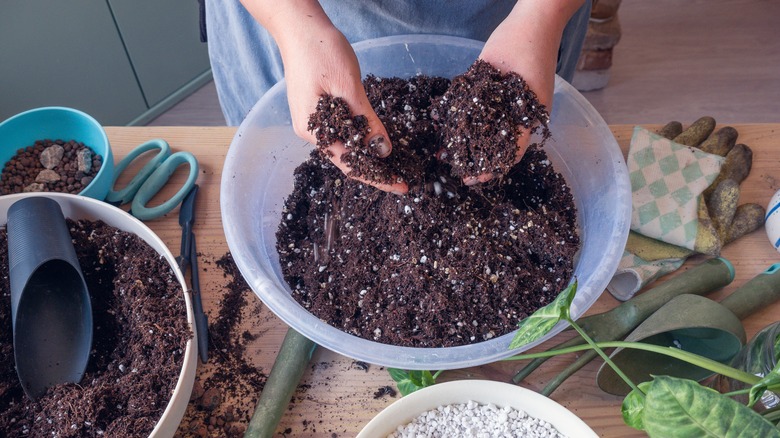What To Do If You've Overwatered Your Cactus Plant
If you've been overly generous with watering your cactus, it's not a time for despair or to give up on your prickly friend. Although it's a frequent blunder, overwatering isn't necessarily fatal. You can still do a few things to aid in your cactus plant's recovery and prevent the same issue from occurring again. Cacti retain a lot of water in their stems, so they don't require much water to thrive. They are surprisingly resilient plants. Evolution has molded them to survive in the harsh, arid conditions of the desert, where water is often scarce and unreliable. This evolutionary history shows them remarkable resilience and the ability to recover from a range of adverse conditions.
That being said, cacti still need water to survive, but they also require substantial dry periods between waterings. The key to reviving your cactus isn't heavy watering but mimicking the conditions of its natural, arid habitat as much as possible. This includes scaling back on watering significantly and ensuring your cactus gets plenty of sunshine. Remember, though, that recovery requires time and patience. It is not an instantaneous process, sometimes even spanning weeks, depending on the extent of overwatering. Don't let this discourage you. With the right care, your cactus can slowly but surely bounce back. By following the below steps diligently, you're setting your cactus up for a successful recovery, providing it with an environment that closely mirrors its natural, arid habitat.
Look out for overwatering signs
To begin rescuing your overwatered cactus, you first need to recognize the signs of overwatering. To do this, gently remove the cactus from its current pot. If the roots of your cactus have maintained a white color, it's a good sign, indicating that the plant is still in a salvageable condition. On the other hand, if your cactus has been subjected to severe overwatering, you might see the roots taking on a black, brown, or mushy appearance. Excessive saturation of the soil can lead your cactus towards an unfortunate condition commonly referred to as root rot. The symptoms of this condition in your cactus may present themselves in the form of a swollen or soft texture. You might also notice discoloration, particularly at the base or lower portions of the plant. In some cases, your cactus might even begin to crumble or fall apart. Should you observe any of these signs, it is absolutely essential that you stop any further watering.
If you're certain you've overwatered the cactus, the next course of action is to place it outside in the sun, where it will dry. Next, it's time to prune the infected roots. Be sure to use a tool that is both clean and sharp to cut away the rotten roots. This step might seem drastic, but it is very important — it halts the spread of rot, protecting the remaining healthy parts of your cactus.
Repot and water your cacti
Now that you've identified and removed the root rot, it's time to repot your cactus. Select a clay pot that's just big enough for your plant, ensuring it has sufficient drainage holes. Clay pots are excellent for cacti since they absorb and evaporate excess moisture, reducing the risk of overwatering. Fill the pot with a fast-draining cactus or succulent mix. This soil type is designed to replicate the sandy and rocky terrain that cacti naturally grow in, facilitating appropriate water retention and drainage. It's important to avoid mixing in old soil to prevent potential fungal buildup from lingering root rot.
Once the cactus seems settled, slowly reintroduce water. Keep in mind that your cactus requires less water than you might imagine. It's best to water your cactus only when you see that the top 2 inches of the soil are entirely dry. This informs you that you only need to water your cacti once every 10 days on average. Press your finger into the mixture to determine how moist the soil is. If it feels dry and offers resistance, it's time to water your cactus. Conversely, if the soil feels damp and your finger moves easily, hold off on watering.


